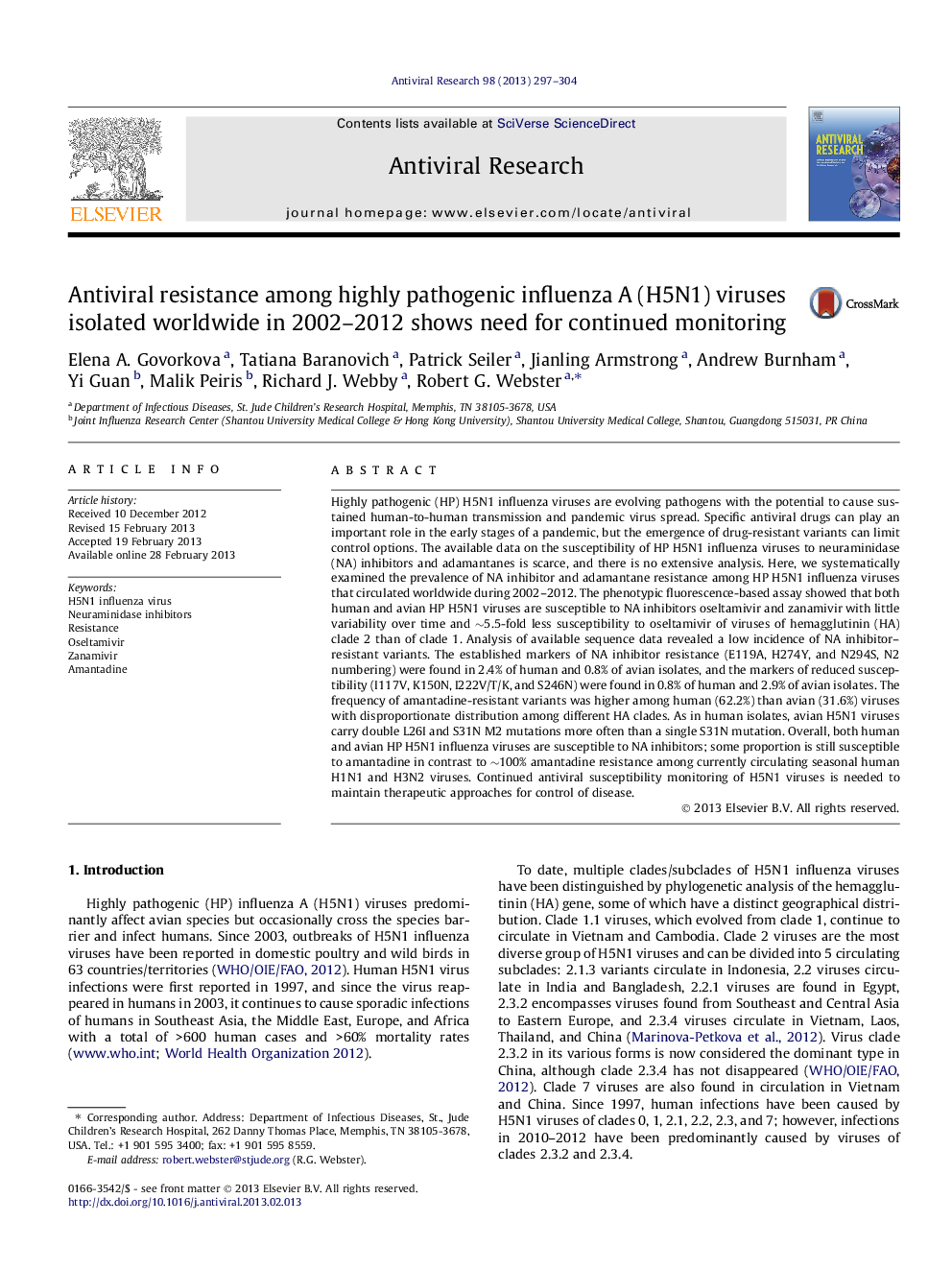| کد مقاله | کد نشریه | سال انتشار | مقاله انگلیسی | نسخه تمام متن |
|---|---|---|---|---|
| 2510198 | 1117959 | 2013 | 8 صفحه PDF | دانلود رایگان |

Highly pathogenic (HP) H5N1 influenza viruses are evolving pathogens with the potential to cause sustained human-to-human transmission and pandemic virus spread. Specific antiviral drugs can play an important role in the early stages of a pandemic, but the emergence of drug-resistant variants can limit control options. The available data on the susceptibility of HP H5N1 influenza viruses to neuraminidase (NA) inhibitors and adamantanes is scarce, and there is no extensive analysis. Here, we systematically examined the prevalence of NA inhibitor and adamantane resistance among HP H5N1 influenza viruses that circulated worldwide during 2002–2012. The phenotypic fluorescence-based assay showed that both human and avian HP H5N1 viruses are susceptible to NA inhibitors oseltamivir and zanamivir with little variability over time and ∼5.5-fold less susceptibility to oseltamivir of viruses of hemagglutinin (HA) clade 2 than of clade 1. Analysis of available sequence data revealed a low incidence of NA inhibitor–resistant variants. The established markers of NA inhibitor resistance (E119A, H274Y, and N294S, N2 numbering) were found in 2.4% of human and 0.8% of avian isolates, and the markers of reduced susceptibility (I117V, K150N, I222V/T/K, and S246N) were found in 0.8% of human and 2.9% of avian isolates. The frequency of amantadine-resistant variants was higher among human (62.2%) than avian (31.6%) viruses with disproportionate distribution among different HA clades. As in human isolates, avian H5N1 viruses carry double L26I and S31N M2 mutations more often than a single S31N mutation. Overall, both human and avian HP H5N1 influenza viruses are susceptible to NA inhibitors; some proportion is still susceptible to amantadine in contrast to ∼100% amantadine resistance among currently circulating seasonal human H1N1 and H3N2 viruses. Continued antiviral susceptibility monitoring of H5N1 viruses is needed to maintain therapeutic approaches for control of disease.
► Highly pathogenic H5N1 influenza viruses are susceptible to neuraminidase inhibitors in vitro.
► A low incidence of oseltamivir-resistant markers in H5N1 influenza viruses have been detected.
► An increase in susceptibility of H5N1 influenza viruses to adamantanes in recent years was identified.
► Antiviral susceptibility surveillance of H5N1 influenza viruses is important.
Journal: Antiviral Research - Volume 98, Issue 2, May 2013, Pages 297–304